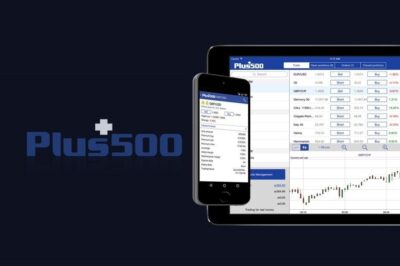Contents:

Understanding how the two compare can help you determine which strategy may work best, based on your investment goals and risk tolerance. Fundamental analysis, on the other hand, takes a different approach. The focus here lies on determining a stock’s intrinsic value based on measures of a company’s financial health. For example, investors may look at key ratios such as price to earnings (P/E), earnings per share and projected earnings growth .


Remember, as a trader you need to see volatility in order to make money. They may also use something like a large, round, psychologically significant figure on that same short-term chart. Although Wilder originally developed the ATR for commodities, the ATR indicator can also be used for various other financial instruments, including stocks, cryptocurrencies, or indices. In short, an asset experiencing a high level of volatility has a higher ATR, while lower volatility is characterized by lower ATR values for the period evaluated.
Limitations of Average True Range
As an option, you can use a moving average with a big period like 100. To do this, choose “Moving Average” among MT4’s trend indicators in the “Navigator” panel, and then drag and drop it into the ATR indicator chart. In the window that pops up, choose “First Indicator’s Data” from the “Apply to” dropdown menu of the “Parameters” tab. Before making an investment decision, you should rely on your own assessment of the person making the trading decisions and the terms of all the legal documentation.
That’s why it’s important to compare average true range measurements for multiple time periods while also incorporating other technical indicators into your investment approach. Average true range represents the average of true ranges over a specified time period. In simpler terms, it measures the volatility of an asset by looking at that asset’s price range over time. ATR also takes into account gaps in price movement when measuring how volatile a security may be. Volatility indicators, which measure the volatility of a security’s price action, are important to day traders.
Astron First Half 2023 Earnings: AU$0.041 loss per share (vs AU$0.041 loss in 1H 2022) – Simply Wall St
Astron First Half 2023 Earnings: AU$0.041 loss per share (vs AU$0.041 loss in 1H .
Posted: Sat, 25 Feb 2023 23:31:50 GMT [source]
The time period used for average true range calculations can vary. It’s common for ATR to be based on a security’s 14-day moving average, though the periods used can be shorter or longer. A shorter time period may be used to measure recent volatility for a security while the period may extend well beyond the 14-day moving average to measure long-term volatility. You can apply ATR on short-term charts, including 1-, 5-, 15-, and 30-minutes. The indicator signals increased volatility when the market opens. The only thing you can learn is the average price movement within a minute.
Using the ATR for the stop loss
The average true range is a technical analysis indicator that measures market volatility and shows how much a security’s price moves, on average, over a specified period. However, traders can use shorter or longer timeframes based on their trading preferences. The average true range is a classic component of technical analysis, and it measures market volatility in a similar way to the relative strength index and exponential moving average. Technical analysis is the study of price action and ignores all other aspects of fundamental analysis, such as external factors that can affect an asset’s price. By studying price charts continuously, short-term traders can assess where to plot profit targets, as well as execution types and stop-loss orders. The ATR can be used to generate buy and sell signals, depending on how volatile the market is, so a trader can decide whether to go long or short on a position.
The average true range relies on a specific formula for measuring volatility. Afinancial advisorcan help you develop an understanding of investment terms and strategies as well. Every trader should remember that volatility always exists. If volatility is low, it’s easy to predict the price direction and determine the levels an asset’s price may reach. In periods of increased volatility, the price fluctuates within large ranges.
If they move in the same direction and the ATR line breaks its moving average on the smaller time frame, it means that the market becomes animated. Combine its signals with indicators and chart patterns that reflect the price direction or the momentum, like, for example, RSI or Stochastic oscillators. If the indicator rises significantly, it’s a signal the price suffers large price fluctuations. Usually, increased volatility doesn’t last for a long time. It means that the price will either correct soon or change its direction.
What is a good number to use for an average true range indicator?
The Average True Range is a common technical analysis indicator designed to measure volatility. This indicator was originally developed by the famed commodity trader, developer and analyst, Welles Wilder, and it was introduced in 1978. When using ATR in this way, you can avoid market noise affecting your trading strategies. If you’re trying to trade a suspected long-term trend, you don’t want daily volatility closing your positions early.
USD/JPY double key reversal confluence – FXStreet
USD/JPY double key reversal confluence.
Posted: Tue, 28 Feb 2023 08:49:19 GMT [source]
After it has moved up, it remains there until it can be moved up again. Alternatively, the trade is closed if the price falls and hits the trailing stop-loss level. The Average True Range indicator shows the degree of the price change for a specific period of time.
https://day-trading.info/ true range is a technical analysis volatility indicator originally developed by J. Second, it’s important to keep in mind that the average true range is a subjective way of measuring stocks and other securities. There is no hard and fast rule or baseline ATR you can use as a measuring stick for determining exactly what will happen next where a particular asset is concerned.
ATR measures volatility, taking into account any gaps in the price movement. Typically, the ATR calculation is based on 14 periods, which can be intraday, daily, weekly, or monthly. To measure recent volatility, use a shorter average, such as 2 to 10 periods. Wilder created Average True Range to capture this “missing” volatility.
How to Calculate the ATR
Traders can use shorter periods than 14 days to generate more trading signals, while longer periods have a higher probability to generate fewer trading signals. Consider talking to a financial advisor about active how active day trading strategies work. If you’re ready to find an advisor who can help you achieve your financial goals, get started now.

These types of charts are useful as traders can use the charts to identify entry and exit points for their positions. Once you’ve done the calculations to find average true range it’s possible to plot them out on a chart. As price movements change, the ATR indicator can move up or down on the chart. In reading an ATR chart, you can visualize when volatility for a specific security is increasing or decreasing across a set time period. This can help with determining when it might make sense to place a trade order to buy or sell a particular security.
This is an outside day that would use Method 1 to calculate the TR. Methods 2 and 3 are used when there is a gap or an inside day. A gap occurs when the previous close is greater than the current high or the previous close is lower than the current low . The image below shows examples of when methods 2 and 3 are appropriate.
The value of the average true range changes and generally falls during the day. Nonetheless, it provides a satisfactory approximation of the price variations and the time that will take for the movements. The average true range values are useful for entry and exit triggers. However, they should not depend only on the average true range, rather it should be used along with a strategy to determine suitable trades. The average true range is an indicator of the price volatility of assets over a specific period.
High volatility describes a market with ongoing price fluctuation, whereas low volatility is used to label a market with little price activity. The higher the value of the indicator, the higher the probability of a trend change. Find the approximate amount of currency units to buy or sell so you can control your maximum risk per position. Net present value is the difference between the present value of cash inflows and the present value of cash outflows over a period of time. Investopedia requires writers to use primary sources to support their work. These include white papers, government data, original reporting, and interviews with industry experts.
- Although it was initially developed for commodity markets, traders now employ the ATR indicator in various financial markets, including trading stocks, cryptocurrencies, or indices.
- It is a tool used by both experienced and novice traders to maximize their potential profits.
- If the average range of trading during the previous 14 days was 309 pips, this is crucial information if you are trading short-term charts.
- It simply refers to the degree of movement of financial assets within a certain period of time.
- Although it won’t define certain levels, it will help you measure how far the order should be placed.
- The traditional Average True Range indicator calculates a discrete number providing the average true range of that chart for a specified number of periods.
https://forexanalytics.info/ also a good idea to apply the indicator Envelopes to ATR. If the latter is below the Envelopes’ lines, volatility is low. A break to the upside signals that the price action has become more intense. By default, MetaTrader will offer you to have “14” as the number of periods.
Data collection notice
Because there must be a beginning, the first TR value is simply the High minus the Low, and the first 14-day ATR is the average of the daily TR values for the last 14 days. After that, Wilder sought to smooth the data by incorporating the previous period’s ATR value. As a hypothetical example, assume the first value of a five-day ATR is calculated at 1.41, and the sixth day has a true range of 1.09. Because the ATR is based on how much each asset moves, the reading for one asset isn’t compared to other assets in isolation. To understand this technical indicator better, here is how it is calculated.
The ATR helps traders to time these breakouts efficiently and gives them the opportunity to join the new trend from its earliest beginnings. After a period of low or flat values, a surge in the ATR will indicate higher volatility in the market and traders can plan how to trade the resulting breakout accordingly. The ATR is designed to purely measure volatility and the indicator neither indicates trend direction nor momentum. By tracking the degree of volatility of an asset, volatility indicators help traders to determine when an underlying asset’s price is about to become more sporadic or less sporadic. Other popular volatility indicators, other than the ATR, include Bollinger Bands and Keltner Channels. The indicator calculates the market’s average price of assets within a 14-day range.
A sharp decline or rise results in high https://forexhistory.info/ true range values. Apart from being a trend strength gauge, ATR serves as an element of position sizing in financial trading. Current ATR value can be used as the size of the potential adverse movement (stop-loss distance) when calculating the trade volume based on trader’s risk tolerance.

After the spike at the open, the ATR typically declines most of the day. The oscillations in the ATR indicator throughout the day don’t provide much information except for how much the price is moving on average each minute. In the same way they use the daily ATR to see how much an asset moves in a day, day traders can use the one-minute ATR to estimate how much the price could move in five or 10 minutes. This strategy may help establish profit targets or stop-loss orders.

No comment yet, add your voice below!